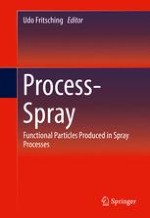2016 | OriginalPaper | Buchkapitel
20. Polymerization in Sprays: Atomization and Product Design of Reactive Polymer Solutions
verfasst von : Magnus Tewes, Urs Alexander Peuker
Erschienen in: Process-Spray
Aktivieren Sie unsere intelligente Suche, um passende Fachinhalte oder Patente zu finden.
Wählen Sie Textabschnitte aus um mit Künstlicher Intelligenz passenden Patente zu finden. powered by
Markieren Sie Textabschnitte, um KI-gestützt weitere passende Inhalte zu finden. powered by
